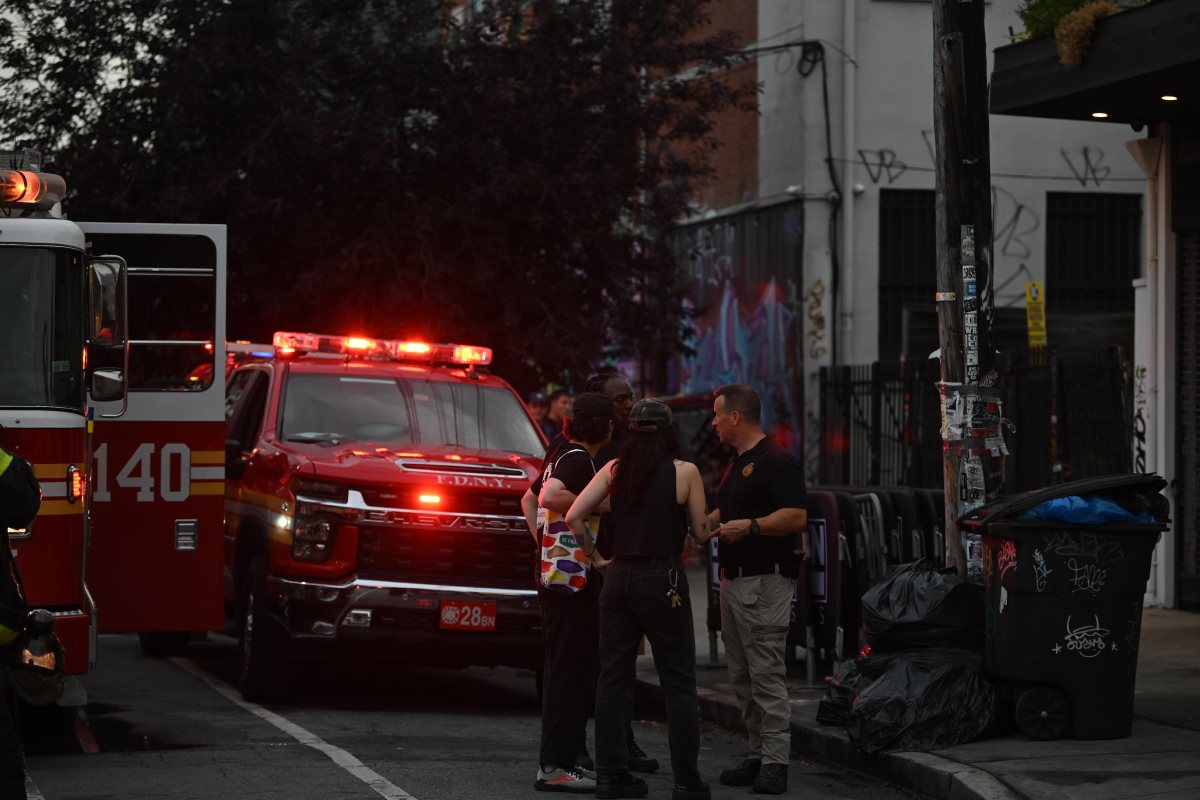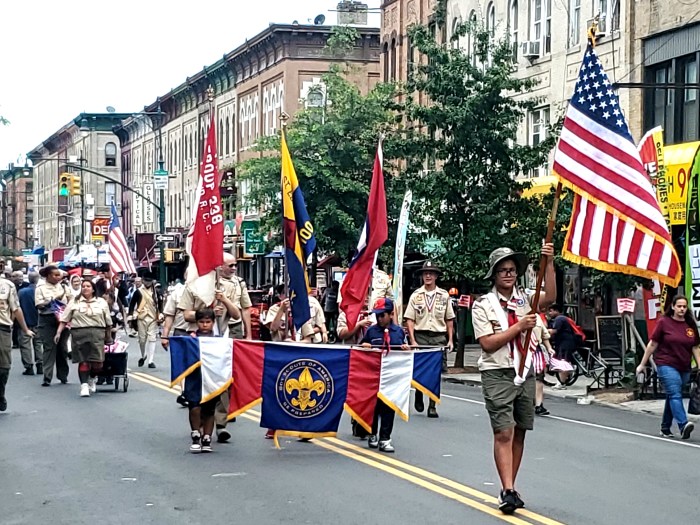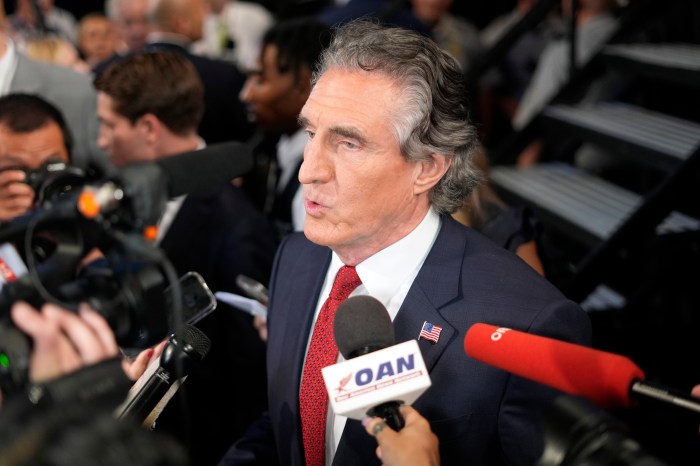As we wind down an eventful 2020 (and look back on some of our top stories of the year), Brooklyn Paper is also looking ahead at some of the biggest stories to watch in 2021.
Here they are, in no particular order:
Borough Jails: The Brooklyn House of Detention on Atlantic Avenue closed its doors exactly one year ago in January of 2020 in anticipation of a new and improved jail that would take its place under the city’s plan to close Rikers Island and move detainees to four borough-based lockups. The city’s plans stalled as the COVID-19 pandemic hit two months later, but officials had planned to demolish the old facility at the corner of Smith Street by mid-2021 and wrap construction on the new building by 2026. It will remain to be seen when and how the city will proceed with this project.
Bike lanes, bike lanes, bike lanes: In January, then-Department of Transportation Commissioner Polly Trottenberg announced the agency would paint 10 miles of protected bike lanes in Brooklyn in 2020, following a bloody 2019 during which more cyclists died on Kings County streets than in the four other boroughs combined. The pandemic stalled progress on those plans and Trottenberg departed the Department in November, but officials have made strides on 9.1 miles of the green-painted paths, including on Fourth Avenue, Smith Street, and Franklin Street. Other lanes are now slated to come online in 2021, such as Meeker Avenue below the north Brooklyn section of the Brooklyn-Queens Expressway and Fort Hamilton Parkway in Windsor Terrace.
However, the city scrapped a 1.3-mile bike lane on Remsen Avenue in Canarsie entirely after pushback by local leaders, including local community board district manager Dottie Turano, who said it would “serve no function.” DOT also dropped a hint at a June community board meeting that officials are thinking about turning a lane on the Brooklyn Bridge roadway into a bike lane, before quickly walking that proposal back. Nevertheless, bike advocacy group Transportation Alternatives has launched the campaign Bridges4People, calling on the city to repurpose car lanes for bikes on all three East River crossings in Brooklyn.
More busways?: The city opened the first busway on Brooklyn’s streets in decades on Jay Street at the end of August, limiting private vehicle access to 0.4-miles of the downtown thoroughfare during weekdays to speed up local buses. Downtown Brooklyn is already home to the decades-old Fulton Mall and transit advocates have identified many other borough streets that would serve as good candidates for more busways.
Gowanus rezoning: The city plans to launch the public review for the Gowanus rezoning on Jan. 19, kicking off a seven-nine month process for public input on the proposal. The last major rezoning under Mayor Bill de Blasio — known officially as the Gowanus Neighborhood Plan — proposes to add some 8,000 new housing units to the neighborhood by 2035, about 3,000 of which will be earmarked as “affordable” units tied to residents’ income levels. The land use changes will allow for buildings to rise up to 22-30 stories in different parts of the low-strung neighborhood along the noxious Gowanus Canal and include special districts for a waterfront esplanade, artist spaces, and retail.

Gowanus Superfund cleanup: The first phase of the federally-overseen Gowanus Canal Superfund Cleanup started in November and will continue through 2021 with excavators scooping out the polluted viscous canal bed sediment known locally as “Black Mayonnaise” north of the Third Street Bridge until mid-2023 at a cost of $125 million. The Environmental Protection Agency plans to continue dredging further south of the 1.8 mile channel in the following years. The city is still on the hook to build two four million and eight million gallon retention tanks to reduce stormwater and sewage overflows from re-polluting the canal. EPA and the city will likely hash out a timeline in early 2021 after months of back and forth and Big Apple officials seeking to delay that project due to funding shortages amid the COVID-19 pandemic.
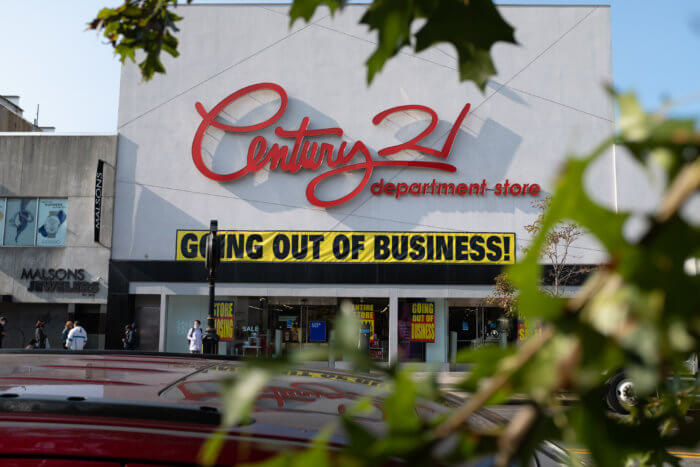
A reimagined 86th Street: The city’s premier fashion retailer, Century 21, declared bankruptcy in early September, shuttering all of its stores shortly after, including its flagship location on Bay Ridge’s 86th Street. The sprawling department store served as the anchor of the bustling commercial district for nearly 70 years, and many residents fear Century 21’s closure will have an adverse effect on nearby businesses. Still, experts suggest the change could bring in more traffic down the road and, while neighbors hope to see a Trader Joe’s or another department store fill the vacancy, the massive commercial space will likely be filled by multiple tenants instead of serving as one large storefront as Century 21 did. Between that, and the coming closure of TJ Maxx a block over, Bay Ridge’s biggest thoroughfare is in for some big changes come 2021.
Making her-story beneath the Brooklyn Bridge: The final section of Brooklyn Bridge Park will open beneath the lawn and borough’s iconic namesake bridge in December 2021. The $8 million overhaul of the two-acre lot into a pedestrian plaza at Water and New Dock streets will honor Emily Roebling, who oversaw the Brooklyn Bridge’s completion in 1883 after her husband Washington Roebling became bedridden with the bends.
Restaurants, bars and small businesses in limbo: With thousands of moms-and-pops shutting their doors across the city, small business owners are pleading with their elected officials to advocate for direct financial relief to buoy their businesses to the other side of the pandemic. Independent restaurants and bars have their sights set on the federal Restaurants Act, which would funnel cash payments directly to the restaurant industry, who claim they did not see many gains from the previously-passed Paycheck Protection Program — or the most recent stimulus bill. If financial aid for small businesses isn’t achieved within the coming months, their owners warn that there will be many more closures over the next year.

BLM/police reform: The Black Lives Matter protests in the wake of George Floyd’s death spurred a wave of police reforms, including state bills that criminalized chokeholds and required police departments to make their disciplinary records public. The reforms continued on the city level, with the City Council cutting the NYPD’s budget by $1 billion, though critics argued that most of the cuts were superficial. The topic of police reform will undoubtedly loom large in the 2021 mayoral and City Council races, and will likely become a dividing line between progressive and moderate Democrats.

E-scooters en route: After the state and city legalized electric stand-up scooters this year, the city’s Department of Transportation started accepting candidates for a pilot program of e-scooter sharing in one of the boroughs outside of Manhattan. Given that Brooklyn hosted the city’s pilot for the now-popular Citi Bike program in the Navy Yard in 2013, and was the starting point for scooter-share company Revel in Bushwick in 2018, the borough is a likely candidate for the city’s first e-scooter sharing service.
Coney’s first ferry: The Coney Island ferry is slated to set sail by the end of 2021, allowing locals to travel to lower Manhattan in just 37 minutes. But while many Coney Island residents say they’re in favor of the new ferry line, environmentalists contend that the ferry dock’s location in the contaminated Coney Island Creek will stir up toxins, potentially putting locals who swim and fish in the creek at risk.
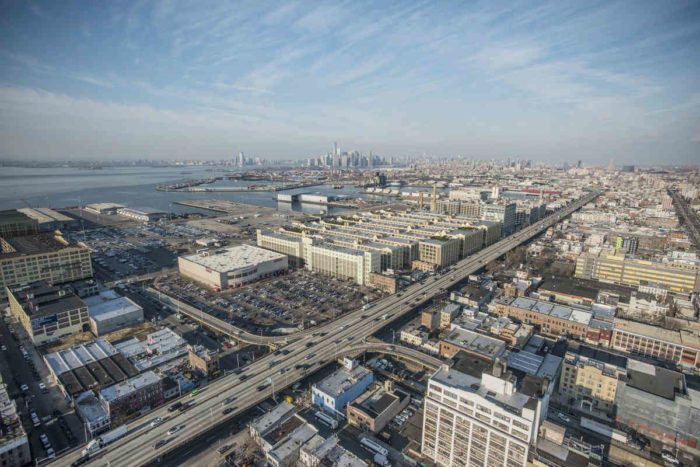
The future of Industry City: After years of planning and community dialogue, executives of Sunset Park’s Industry City pulled their rezoning application in September after several local politicians spoke out against the land use change. If it had been approved, the rezoning would have paved the way for a $1 billion, 12-year renovation of the complex that would have added a slate of new uses, such as big box retail and academic space, to the 35-acre campus. Now, Industry City’s owners say they may turn a bulk of the complex into office space and last-mile warehousing, but locals are pushing for a community-led rezoning that would bring green manufacturing jobs to the space.
Mass vaccination: Borough hospitals have already begun rolling out COVID-19 vaccines to healthcare workers, as well as employees and residents in long-term health facilities and nursing homes. City health officials estimate that the vaccine won’t be available to the public until mid-2021, and have not yet outlined how New Yorkers will be able to get it.
Coney Island Creek cleanup: While the Gowanus Canal is gearing up for its cleanup, the Coney Island Creek is still in the early investigative stages. Authorities with the federal Environmental Protection Agency announced in December that they will test samples of the creek’s soil and water to see if the canal qualifies for a Superfund cleanup. The investigation comes after a local activist wrote a letter to the agency about the creek’s filth, and the agency determined that the creek’s history — in which it served as a dumping ground for nearby factories — qualifies it for a more thorough review.
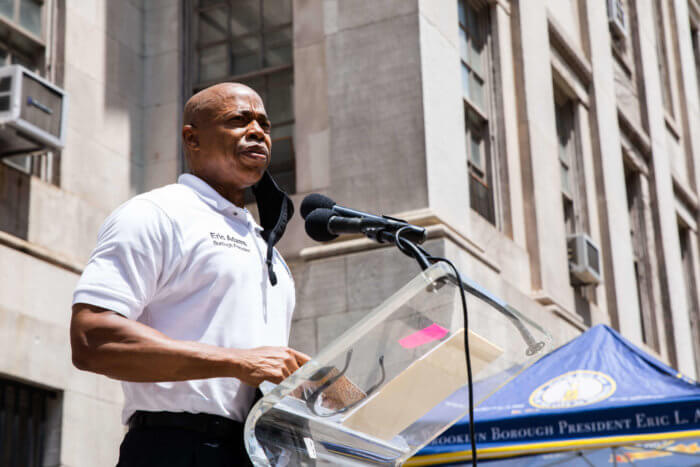
Beep, Beep: With term-limited Brooklyn Borough President vying to be the next mayor of New York City, that leaves for a big opening at Brooklyn Borough Hall. A handful of hopefuls have already entered the race, including Assemblywoman Jo Anne Simon, Brookdale Hospital executive Khari Edwards and term-limited Council members Robert Cornegy of Bedford-Stuyvesant, Antonio Reynoso of Bushwick, and Mathieu Eugene of Flatbush.
Contentious elections citywide: All of city government will be on the ballot next year, with most of the 51-seat City Council term-limited out of office. With that in mind — as well as the already heavily-contested races for mayor and comptroller — the polls will no doubt be an important place to be come November. There are already hundreds of candidates who have filed to run for various seats, with somewhere in the ballpark of 500 candidates expected by the time the races really heat up, Gotham Gazette reported. With the launch of ranked-choice voting also looming, it’s sure to be an extra spicy election year — with even spicier local elections.
BQE repairs: The fate of the crumbling Brooklyn-Queens Expressway’s triple cantilever section around Brooklyn Heights has been in bureaucratic limbo for a year since the mayoral expert panel released its report which warned that the decaying roadway could become unsafe by 2025. City and state officials have proposed automating enforcement against overweight trucks on the highway and the city has done some minor repair jobs, but beyond that there has been no publicized progress on the monumental infrastructure project.
Duffield Street landmarking: City preservationist gurus are slated to decide on whether to landmark a 19th century row house that once housed slavery abolitionists at 227 Duffield St. in Downtown Brooklyn. The building was home to slavery abolitionists Thomas and Harriet Lee-Truesdell from 1851 to 1863 and remained in their family’s possession until 1921. The house, along with several along Duffield and Gold streets, may have been a stop on the Underground Railroad, according to local lore. Developer Samiel Hanasab plans to erect a 10-story tower in its place, and is against the landmarking, but said through an attorney that he would be willing to commit to including a “permanent” museum on the lower floors and residential units above.
Brooklyn Nets compete for the NBA title: Former National Basketball League MVP Kevin Durant finally takes the court wearing the Brooklyn Nets’ signature back and white uniforms this year, in what should mark the team’s most promising season since they moved across the Hudson River from New Jersey. Along with All-Star point guard Kyrie Irving, the Nets figure to be among the best squads in the eastern conference, and most experts believe they’ll be contenders to hoist the Larry O’Brien Championship Trophy next summer.
Franklin Avenue rezoning appeal: The Department of City Planning faced a shocking defeat in court against neighborhood activists after the 2018 Franklin Avenue rezoning was overturned, with a Kings County Supreme Court Justice siding with activists who feel the department did not conduct a thorough enough environmental review before certifying the rezoning. If pushed through, the rezoning would have allowed for two 16-story towers in Crown Heights. City lawyers have since filed an appeal, and updates are expected early into 2021.
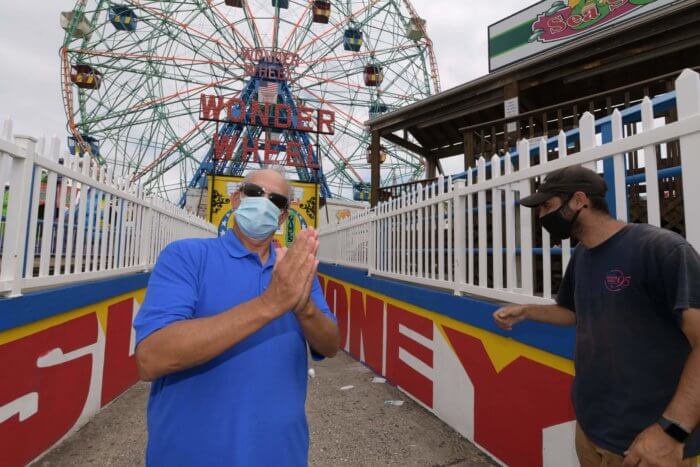
A new year for Coney Island: The past year was a tough one for the People’s Playground. Not only were beloved traditions like the Mermaid Parade canceled, but the season-long closure of the amusement district dealt a tough blow to the local economy. The owners of Luna Park and Deno’s Wonder Wheel Amusement Park have pushed Gov. Andrew Cuomo to issue reopening guidelines for the amusement district — saying that the future of the parks hang in the balance — but Cuomo hasn’t released any guidelines yet. On the bright side, Deno’s will open a new roller coaster in 2021 that’ll give thrills to riders of all ages, once it’s allowed to open.











